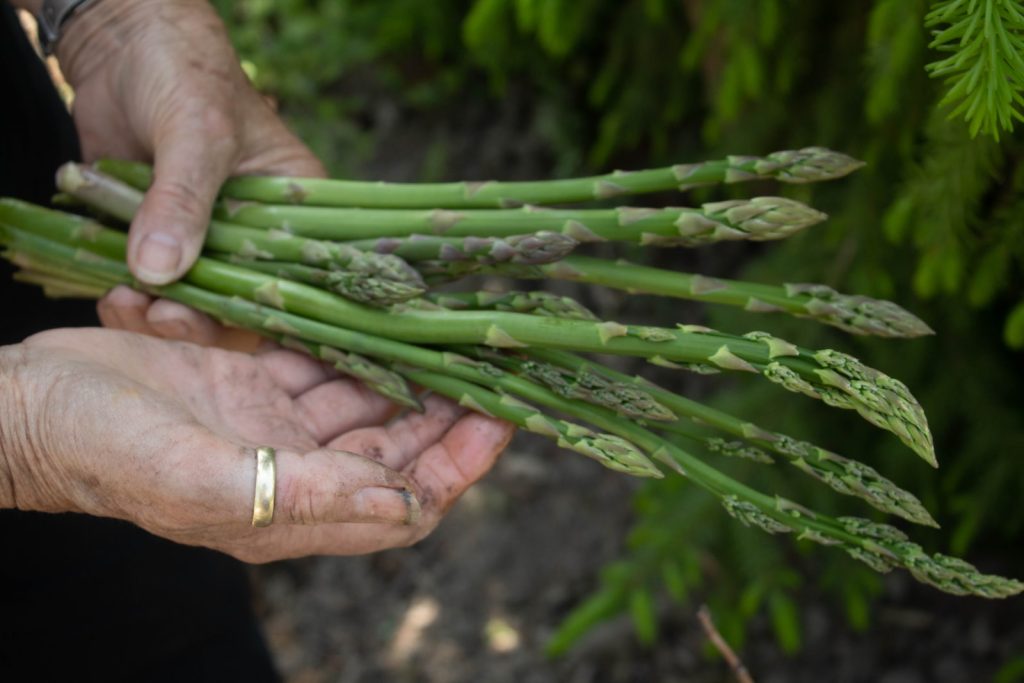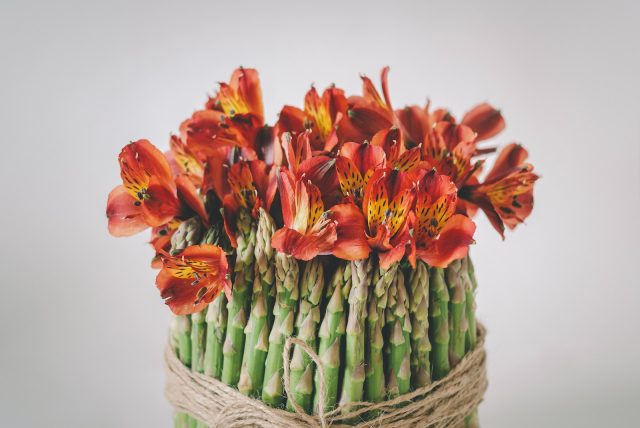Why grow Asparagus?
Asparagus is a popular vegetable for its unique flavor, variety of uses, and health benefits. Not only can it be eaten on its own, but it can also be used in countless recipes to add flavor and nutrition. Growing asparagus allows gardeners to enjoy this incredible vegetable right from their backyard. From planting to harvesting, here are the basics you need to know about how to plant and care for asparagus.
Asparagus has been around since ancient times and has been enjoyed worldwide due to its delicious taste, nutritional value, and long shelf life when frozen or canned correctly. It’s also a great source of fiber, antioxidants, vitamins A & C, folate, iron, and calcium. Plus, it can be cooked in various ways, including roasting in the oven or steaming on the stovetop.
The best time to plant Asparagus
Asparagus is a popular and nutritious vegetable that can be grown in many climates. Gardeners looking to plant asparagus should know when the best time to do so is. Planting at the right time will ensure the best harvest and make caring for the crop much more accessible.
Fall is typically the best time to plant asparagus in northern climates, allowing it to establish itself in its new location before temperatures drop too low in winter. However, spring planting after all danger of frost has passed in warmer climates is preferable, as this allows more growing seasons before cool weather sets in again. Both methods require that soil temperature be between 45-85 degrees Fahrenheit for successful germination and growth of seedlings or crowns.
Sunlight: how much sun does Asparagus needs?
Asparagus is a favorite vegetable of many gardeners around the world. The asparagus plant is hearty and can thrive in most areas, but it requires special care to ensure that it grows properly. One of the essential elements for proper growth and development is sunlight, and knowing how much sun your asparagus needs will help you get the best crop possible.
Sunlight is essential for the healthy growth of any plant, including asparagus. Asparagus plants need at least 6-8 hours of direct sunshine daily to flourish and produce a good harvest. If you are planting asparagus in an area with less than 8 hours of direct sunlight, consider using a reflective mulch or other material to increase the amount of light reaching your plants.
Temperature: what temperature range is best for Asparagus
Asparagus is a hearty, low-maintenance vegetable that can be harvested for years. Knowing the optimal temperature range for asparagus can help ensure successful growth and harvesting. Temperature plays a vital role in determining how well your asparagus crop will do, so it’s essential to understand what temperature range best suits this popular vegetable.
Ideal temperatures for asparagus vary depending on the stage of growth and season. For spring planting or seeding, soil temperatures should be between 50°F and 65°F (10°C to 18°C). During the growing season, daytime temperatures should remain above 60°F (15°C), while nighttime temperatures should not drop below 40°F (5°C). Asparagus prefers cooler summer evenings but can tolerate warmer weather during the day.
Where to plant Asparagus
Are you looking for the perfect spot to plant asparagus? Asparagus is an excellent addition to any garden as an early spring crop. Planting and caring for this vegetable is simple if you know the basics. This article will detail where to plant asparagus to get the most out of your garden this season.
When selecting a location for planting asparagus, it’s essential to find an area with well-draining soil and plenty of suns. While asparagus will grow in partial shade, it prefers full sunlight with at least six hours each day. For best results, choose a spot with lots of sunlight and deep, crumbly soils such as clay or loam. Avoid planting near trees or shrubs since their roots may interfere with the growth of your plants.
Pots: what size pots are best for Asparagus?
Asparagus is a hardy vegetable that can be planted in spring and fall, but how you grow it and what size of pot you use will determine the success of your harvest. Choosing the right pot for asparagus may seem banking for those new to gardening. Luckily, with some know-how, you can decide which size and type of pot are best suited to growing this delicious vegetable.
When planting asparagus in pots, larger sizes are usually more beneficial than smaller ones—the more significant the pool, the more space available for root growth and soil drainage. A good rule of thumb is to choose a container at least 12 inches deep and wide, so there’s plenty of room for roots to spread out and water to drain away correctly.
Soil: what type of soil is best for Asparagus?
Asparagus is a delicious, low-maintenance vegetable that can be grown in many different types of soil. But it’s essential to choose the right kind of soil for the healthiest, most abundant crops of delicious spears when planting asparagus.
Soil with a higher pH level is best for asparagus; this means ground that has more alkaline than acidic. Asparagus loves loamy soils, which are nutrient-rich and have equal parts sand, silt, and clay. This soil holds moisture well and provides good drainage, two critical components for successful asparagus growth. Compost or aged manure should be added to the area before planting – about 5 pounds per 100 square feet – to provide additional nutrients and organic matter to help keep the soil fertile.
How to plant Asparagus?
Asparagus is an easy vegetable to grow and can be planted indoors and outdoors, making it the perfect choice for novice gardeners. Asparagus requires very little attention to thrive, but knowing how to produce it correctly and care for it is essential to get a good harvest. This article will provide the basics you need to know to grow asparagus successfully in your garden or container.
To begin with, select a spot with well-draining soil in full sun for planting your asparagus crowns. Choose an area where nothing else will be produced during the first year of growth – this allows plenty of space for the roots to develop without competing with other plants nearby. For outdoor gardens, ensure the soil is amended with lots of organic matter, such as compost, before planting your asparagus crowns.
Watering Asparagus
Asparagus is a popular garden vegetable that can provide years of delicious harvest. Understanding the basics of planting and caring for asparagus is essential to ensure that it grows properly and yields the best possible results. Watering asparagus is an integral part of this process, and there are a few tips to keep in mind if you want your plants to thrive.
First, could you make sure the soil surrounding your asparagus is consistently moist? Asparagus prefers wet soil, but avoid over-watering – too much water can lead to root rot or other problems with growth. When watering your asparagus, use a gentle, steady stream of water rather than a heavy downpour – this helps reduce runoff while ensuring all areas get adequate hydration.
Fertilizing Asparagus
Asparagus is one of the most popular vegetables to grow in your garden due to its delicious taste and a wide variety of uses. But, while asparagus may be easy to plant and maintain, you must provide proper care and fertilization for the best harvest possible. This article will discuss how to plant and care for asparagus, including fertilizing tips that can help ensure a healthy crop.
Fertilizing is essential for asparagus plants since they need sufficient nutrition throughout their growing season. It would be best if you started fertilizing soon after planting with an organic or all-purpose fertilizer at a rate recommended on the package instructions. During the growing season, continue fertilizing every four weeks using granular or liquid fertilizer (following package instructions).
Pruning Asparagus
Pruning asparagus is an integral part of caring for the vegetable. Not only does it help ensure a plentiful harvest, and pruning also helps control diseases and pests. Pruning correctly can be the difference between a thriving crop and one that struggles to survive.
When it comes to pruning asparagus, some simple steps should be followed. First, remove any dead or diseased foliage from the plant by cutting it back at least a few inches below the infected area. This will help prevent further damage to other parts of the plant and stop fungus from spreading. Also, could you trim any spears lower than six inches tall? This will encourage new growth in taller spears throughout the season.
Harvesting: when and how to harvest Asparagus?
Harvesting asparagus is an integral part of the planting process and requires special attention to ensure a successful crop. Knowing when and how to harvest your asparagus will ensure a plentiful supply of fresh vegetables every season.
The best time to harvest asparagus is in the spring when the spears are six to eight inches long. To harvest, snap off or cut the spears at soil level with a sharp knife or garden scissors. For optimal flavor, picking the spears early in the morning is best before they become woody and tough. As long as you continue cutting back any old foliage that appears, your plants will produce new shoots each year for several years.
For peak flavor, avoiding overharvesting is essential by picking only about one-third of each plant’s shoots during any given harvesting period.

Troubleshooting common problems with Asparagus
Asparagus is a perennial favorite in home gardens, with its delicious flavor and nutritional benefits. But it can be tricky to get started growing this vegetable correctly. Planting asparagus in the wrong place or not caring for it properly can cause joint problems like disease, poor growth, and loss of production. In this article, we’ll look at how to plant and care for asparagus so you can avoid these issues. We’ll also provide troubleshooting tips for common problems that may arise. With the proper knowledge and extra effort, your asparagus patch will thrive, and you’ll enjoy a bountiful harvest season after season!































Can I simply just say what a comfort to discover an individual who genuinely knows what they are discussing on the internet. You definitely realize how to bring an issue to light and make it important. More people should look at this and understand this side of the story. I was surprised that youre not more popular since you surely possess the gift.